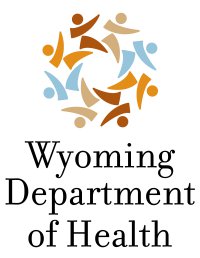Background
Since the 1950s, scientists have been collecting evidence about the harmful effects of smoking. In 1964, the U.S. Surgeon General’s office issued a landmark report, Smoking and Health: Report of the Advisory Committee to the Surgeon General, which stated that a link between smoking and certain cancers exists (U.S. Department of Health, Education, and Welfare, 1964). Based on a review of the latest research, cigarette smoking and breathing secondhand smoke (SHS) cause multiple cancers and chronic diseases (U.S. Department of Health and Human Services [USDHHS], 2010, 2014).
Smoking is the leading preventable cause of death in the United States. In Wyoming, smoking leads to approximately 800 deaths from smoking-related illnesses each year and nearly $258 million in annual healthcare costs (Centers for Disease Control and Prevention [CDC], 2014a).
The impact of tobacco has been greater for specific groups. For example, research shows the tobacco industry has targeted promotional efforts toward certain neighborhoods and groups such as the LGBTQ+ community, people of color, people with lower incomes, indigenous people, and people experiencing behavioral health conditions (D’Silva et al., 2018; Farber & Folan, 2017; Lee et al., 2015; Williams et al., 2013). As a result, people in these groups are more likely to smoke. That puts these populations at a disproportionate risk of smoking-related disease and death. These inequities have a greater impact on health outcomes than individual choices.
The Wyoming Tobacco Prevention and Control Program (TPCP) works to reduce tobacco use in Wyoming by using a variety of strategies to achieve the following four goals that it shares with the CDC:
- Preventing initiation of tobacco use (CDC, 2014b)
- Eliminating nonsmokers’ exposure to secondhand smoke (CDC, 2017a)
- Promoting quitting among adults and young people (CDC, 2015b)
- Identifying and eliminating tobacco-related disparities (CDC, 2014b, 2015b, 2017a)
As part of monitoring progress on these goals, the TPCP tracks the use and availability of tobacco products including cigarettes, electronic nicotine delivery systems (ENDS; also known as e-cigarettes or vaping devices), and other forms of tobacco.
The achievement of tobacco prevention outcomes is the collective result of the work of many organizations over time. The efforts of state government programs including the TPCP, multiple federal agencies, and other groups such as county tobacco prevention coalitions have all played a part in tobacco prevention and control in Wyoming. Key federal agencies include the U.S. Food and Drug Administration (FDA), the Substance Abuse and Mental Health Services Administration (SAMHSA), and the CDC. Non-governmental groups include the Robert Wood Johnson Foundation, the Campaign for Tobacco-Free Kids, the American Non-smokers’ Rights Foundation, the American Cancer Society, and the American Lung Association. Changes also reflect influences of the tobacco industry, such as changes in marketing practices or the release of new products such as ENDS.
The Wyoming Adult Tobacco Survey (ATS) is a telephone survey administered by the Wyoming Survey & Analysis Center (WYSAC) at the University of Wyoming under contract to the Wyoming Department of Health (WDH), Public Health Division (PHD). Its purpose is to collect state- and county-level data about tobacco use, the four TPCP/CDC goals, and the broader goal of reducing tobacco-related disease and death. In addition to analyzing the 2019 data, data from previous versions of the survey were used to analyze trends.
2019 ATS Methods
This section provides a general summary of the methods used to collect and analyze the data for the 2019 ATS. Additional technical details, including criteria for determining statistical significance, are in Appendix A.
WYSAC telephone interviewers conducted the telephone interviews. Most callers have significant experience on previous ATSs conducted by WYSAC for other states in recent years. Calling began on February 21, 2019 and ended on June 9, 2019. WYSAC callers completed 2,306 surveys (49% on cellphones; 51% on landlines).
In some figures and tables, percentages may not total 100% because respondents could choose more than one response. Occasionally, rounding of the actual percentages may result in reporting percentages that do not total 100.
Key Limitations
Most ATS survey items have been tested and validated by the CDC and reused over time. However, the ATS relies on self‐reported data, respondents’ memory of events, and their interpretation of the survey items. Therefore, the results presented here might include recall errors or respondent bias (such as not reporting on behaviors perceived to be unhealthy or unpopular).
In some cases, fewer than 50 people were asked an item. Estimates generated from such small groups are extremely imprecise and are not included in the body of the report. This follows the example set by the CDC in reporting Behavioral Risk Factor Surveillance System (BRFSS) statistics (https://www.cdc.gov/brfss/brfssprevalence/).

